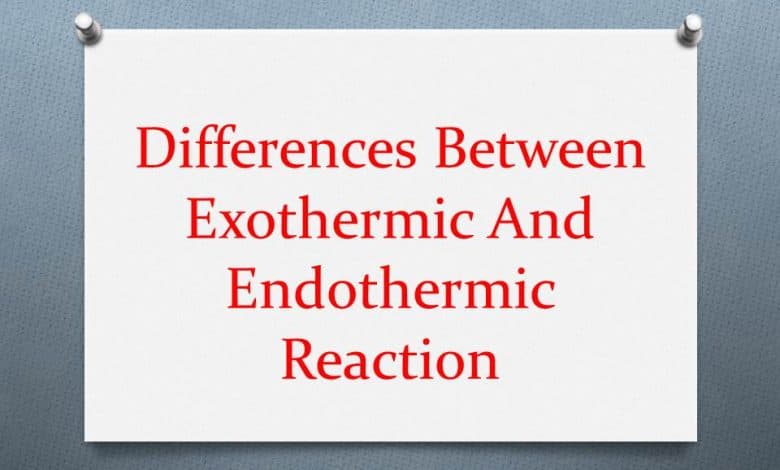5 Differences Between Exothermic And Endothermic Reaction

In this article, the differences between endothermic and exothermic reaction will be discussed. Also, examples of each reaction will be given. During a chemical reaction, heat can be evolved or absorbed depending on the relative heat content of the reactants and the products. When the total heat content of the products is less than that of the reactants the excess energy will be given off as heat to the surrounding as the reaction occurs
What is Exothermic Reaction?
An exothermic reaction is one during which heat is liberated to the surrounding. This can also be explained as when the products is less than that of the reactants the excess energy will be given off as heat to the surrounding as the reaction occurs. So, the surrounding becomes hotter at the end of the changes. In this reaction, the heat of reaction (delta H) is negative.
Delta (H) = Heat content of products – Heat content of reactants
What is Endothermic Reaction?
An endothermic reaction is one during which heat is absorbed from the surrounding. Also, when the total heat content of the products is more than that of the reactants, heat energy must be absorbed from the surroundings for the reaction to proceed. Such a reaction is said to be endothermic. Hence, the surrounding becomes colder at the end of the changes. In this reaction, the heat of reaction (delta H) is positive. It should be noted that delta H needed to change a system from the initial state (reactants) to the final state (products) is independent of the path taken.
Read: Differences between mixtures and compounds
Examples of Exothermic and Endothermic Reactions With Equtions
Exothermic
All burning process is an example of exothermic reaction.
Reaction between calcium oxide and water
CaO (s) + H2O (l) -> Ca(OH)2 (s)
Reaction between an acid and a base
HCl (aq) + Na(OH) (aq) -> NaCl (aq) + H2O (l)
Endothermic
Thermal decomposition of calcium trioxocarbonate (IV)
CaCO3 (s) -> CaO (s) + CO2 (g)
Thermal dissociation of ammonium chloride
NH4Cl (s) -> NH3 (g) + HCl (g)
Differences Between Exothermic and Endothermic Reaction
| Exothermic reaction | Endothermic reaction |
| Delta H (heat of reaction) is negative. The negative sign indicate that during the reaction, the reacting system loss heat to the surroundings. | Delta H (heat of reaction) is positive. The positive sign indicate that during the reaction, the reacting system gain heat from the surroundings. |
| Bond-forming is an exothermic change i.e. energy is always evolved when a new bond is formed. | Bond-breaking is an endothermic change. To break a chemical bond, energy must be supplied to overcome the forces involved in the bond such as electrostatic attraction in ionic compound. |
| There is a rise in temperature so the reaction vessel feels warm. | There is a fall in temperature so the reaction vessels feels cool |
| Heat is liberated to the surrounding | Heat is absorbed from the surrounding |
| Rusting iron, settling, chemical bonds, explosions, nuclear fission are a few examples. | Melting ice, evaporation, cooking, gas molecules, photosynthesis are a few examples |
